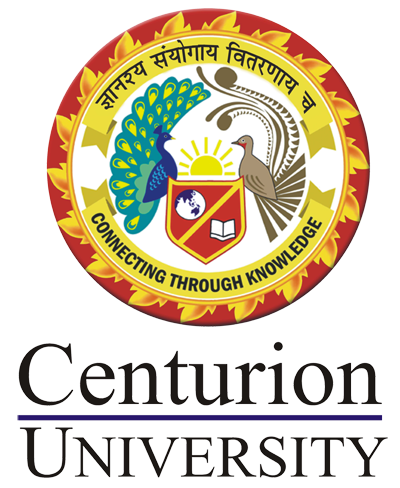Retail Sales
Course Attendees
Still no participant
Course Reviews
Still no reviews
Course Description
This course examines the overall organizational structure and relationships within a retail organization. It emphasizes sales supporting (non-merchandising) functions and current trends. It includes single-unit and multi-unit structures, receiving, marking, stock, warehousing, delivery, wrapping-packing, adjustments, credit, accounts payable, audit, security, workrooms, and personnel. This Course is focused on Helping Retail Sales Representatives, Customer Service Representatives, and Store Management Personnel Improve Their Productivity and Their Customer’s Experience
Course Objectives
- To describe the complex nature and environment of retail management together with the buying and selling of goods, services, and ideas to the final consumer.
- To identify the approaches to and guidelines used to analyse and solve retailers' problems and make decisions in retail organizations.
Course Outcomes
- Evaluate current retailing trends based on consumer, legal and competitive environments.
- Identify various retail opportunities and evaluate the strategies associated with each type of opportunity.
Course Outline
Module - 1: Introduction to Retail, Sales and Customer Care
The business of retailing: retail; retailer; retail outlet; distinguishing between products and services. Retail channels: shops; catalogues; online selling; flea markets; showrooms; television shopping; mobile kiosks; door-to-door trading; supermarkets; shopping complexes. The characteristics of the local retail environment: sole traders, the impact of the internet and online shopping; Occupations: e.g.: sales assistant, stock controller, shelf stacker, customer service representative, store manager, supervisor, team leader, delivery person, warehouse supervisor, obtaining feedback from the customer
Module-2: Key aspects of retail Operations
Importance of cash handling procedures: prevention of the mishandling of money; accountability; dealing with customer complaints relating to incorrect change; Payment methods: cash; credit and debit cards; demand draft/cheque; online payments through retailer's website or bill payment facility through internet banking. Considerations in setting retail prices: price sensitivity; competition; cost; legal constraints. Cash handling. Product: creativity; attractiveness of product; availability of receipts as proof of costs; evidence of teamwork; correct description of product. Good housekeeping practices: maintaining a cleaning schedule; keeping store entrance clean; maintaining a clean front door; cleaning all shelves and displays; keeping back areas clean; keeping payment area clean.
Module-3: Dealing with stock, visual merchandising and Supply Chain
Definition of stock, theft control, customer service, product tracking, warehouse space requirements, identifying current stock levels; preventing wastage; improving stock rotation. stock checks; stocktaking; audits; stock calculation. Ensuring quality and quantity of goods: assessing the quality of goods received; rejecting unnecessary stock; preventing over/under stocking and identifying undelivered stock., Layout plan: well-planned; effective use of space; neat layout; use of multiple suppliers, Investment in transportation software’s, Components and principles of retail supply chain management and Factors responsible for effective supply chain management, innovations in supply chain management
Practice – 1
Students must participate in selling the products by door-to-door selling technique, online selling and also offline selling through retail outlets by delivering the products to stores, demonstrating the products to customers.
Practice – 2
Students have to maintain the cash handling and bill payments through available software and also to maintain the store in a clean and hygiene condition (through Internship in a store / section)
Practice – 3
Students will be given responsibility to maintain the stock levels, maintain the warehouse, Layout of the store with maximum flexibility and minimum operational process and to cope with supply chain management
Books / References
- Gibson G. Vedamani, Retail Management – Functional Principles and Practices, 3rd Edition JAICO Publishing House
- David Gilbert, Retail Marketing Management, 2nd EditionPearson Education Low Price Edition
- Swapna Pradhan, Retailing Management, Text and Cases, 2nd editionTata McGraw Hill Publishing,
Session 1 & 2
The business of retailing: retail; retailer; retail outlet; distinguishing between products and services. Retail channels: shops; catalogues; online selling; flea markets; showrooms; television shopping; mobile kiosks; door-to-door trading; supermarkets; shopping complex
Session 3
The characteristics of the local retail environment: sole traders, the impact of the internet and online shopping
Session 4 & 5
Occupations: e.g.: sales assistant, stock controller, shelf stacker, customer service representative, store manager, supervisor, team leader, delivery person, warehouse supervisor, obtaining feedback from the customer
Session 6,7 & 8
Importance of cash handling procedures: prevention of the mishandling of money; accountability; dealing with customer complaints relating to incorrect change; Payment methods: cash; credit and debit cards; demand draft/cheque; online payments through retailer's website or bill payment facility through internet banking
Session 9
Internal Assessment - 1
Session 10
Considerations in setting retail prices: price sensitivity; competition; cost; legal constraints.
Session 11, 12 & 13
Product: creativity; attractiveness of product; availability of receipts as proof of costs; evidence of teamwork; correct description of product. Good housekeeping practices: maintaining a cleaning schedule; keeping store entrance clean; maintaining a clean front door; cleaning all shelves and displays; keeping back areas clean; keeping payment area clean.
Session 14 & 15
Definition of stock, theft control, customer service, product tracking, warehouse space requirements, identifying current stock levels; preventing wastage; improving stock rotation. stock checks; stocktaking; audits; stock calculation
Session 16
Internal assessment - 2
Session 17 & 18
Ensuring quality and quantity of goods: assessing the quality of goods received; rejecting unnecessary stock; preventing over/under stocking and identifying undelivered stock
Session 19
Layout plan: well-planned; effective use of space; neat layout; use of multiple suppliers,
Session 20 & 21
Investment in transportation software’s, Components and principles of retail supply chain management and Factors responsible for effective supply chain management, innovations in supply chain management
Session 22
Internal Assessment - 3
Session 23-28
Practice Session - 1
Session 29-34
Practice Session -2
Session 35-40
Practice Session -3
Our Main Teachers
Doctorate in Human Resource Management ( Stress Management ) / Associate NCC Officer , NCC Unit, Centurion University / School of Management / Paralakhemundi Campus / Odisha / India

